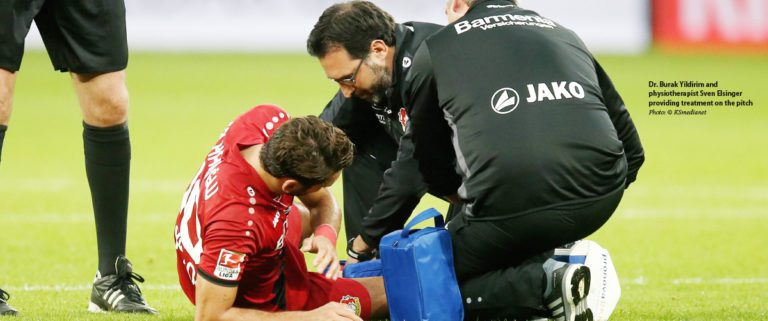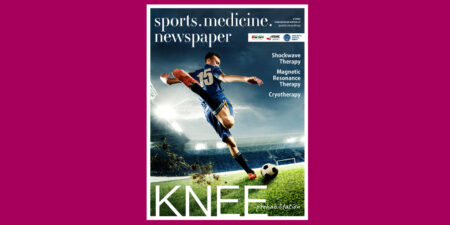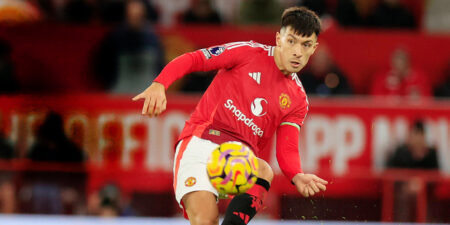Approx. 30 % of all injuries and about 27 % of the resulting playing time lost in professional football are due to muscle injuries [1]. An average of 0.6 muscle injuries per player per season in a squad of 25 players means approx. 15 muscle injuries per squad per season. Up to 97 % affect the lower limbs, primarily the hamstrings (37 %), adductors (23 %), quadriceps (19 %) and lower leg muscles (13 %) [1]. Due to the heterogeneity of the injuries and, in some cases, the severe internal bleeding/oedema, the correct application of measures to reduce swelling is also particularly important.
In this article, I would like to present two illustrative case studies involving the immediate use of intermittent vacuum therapy (IVT) in the first few days after injury. It is a procedure that we have employed very effectively as an adjunct in traumatic sports injuries.
IVT – mode of operation and applications
IVT applies alternating negative pressure (vacuum) and positive pressure to the lower limbs up to the abdomen. This improves circulation and increases capillarisation and venous and lymphatic return. The central nervous system is also stimulated. As no compression is involved, the treatment is completely painless, irrespective of the injury or its stage. The principle applications of the VACUMed® Flow Regeneration System, developed at the German Aerospace Centre (DLR), are cardiovascular stimulation and revascularisation. IVT is also recognised as a modern and cost-effective form of treatment for lymphoedema and lipoedema. The procedure is also used in a different form to boost post-traumatic and post-operative rehabilitation (VACUSPORT® device) and for a number of years has been used very effectively for traumatic sports injuries.
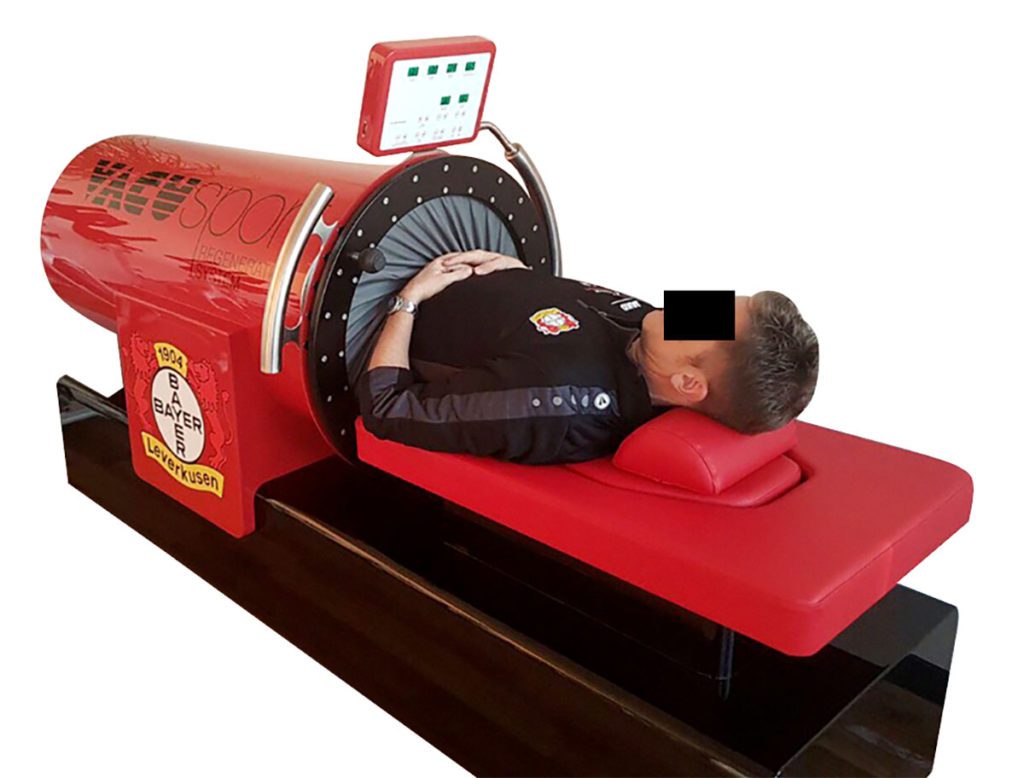
Illustrative case studies
Muscle bundle tear (musculotendinous junction) rectus femoris:
- VacuSport: applied immediately in the first few days after injury (following ACP therapy)
- AlterG treadmill: from day 15
- Running (full weight-bearing): from day 19 (following biomechanical assessment)
- SpeedCourt: from day 28
- Football-specific individual training: from day 33
- Team training: from day 41
MRI at the time of injury (Fig. 1) and at 3-week follow-up (Fig. 2)

Fig. 1 Muscle bundle tear at the time of Injury 
Fig. 2 Muscle bundle tearat 3-week follow-up
Proximal rectus femoris tendon rupture
- VacuSport: immediately in the first few days after injury (following ACP therapy)
- AlterG treadmill: from day 25
- Running (full weight-bearing): from day 28 (following biomechanical assessment)
- SpeedCourt: from day 32
- Football-specific individual training: from day 45
- Team training: from day 60 (following biomechanical assessment)
MRI at the time of injury (Figs. 3+4), at 3-week follow-up (Figs. 5+6) and at 6-week follow-up (Figs. 7+8)
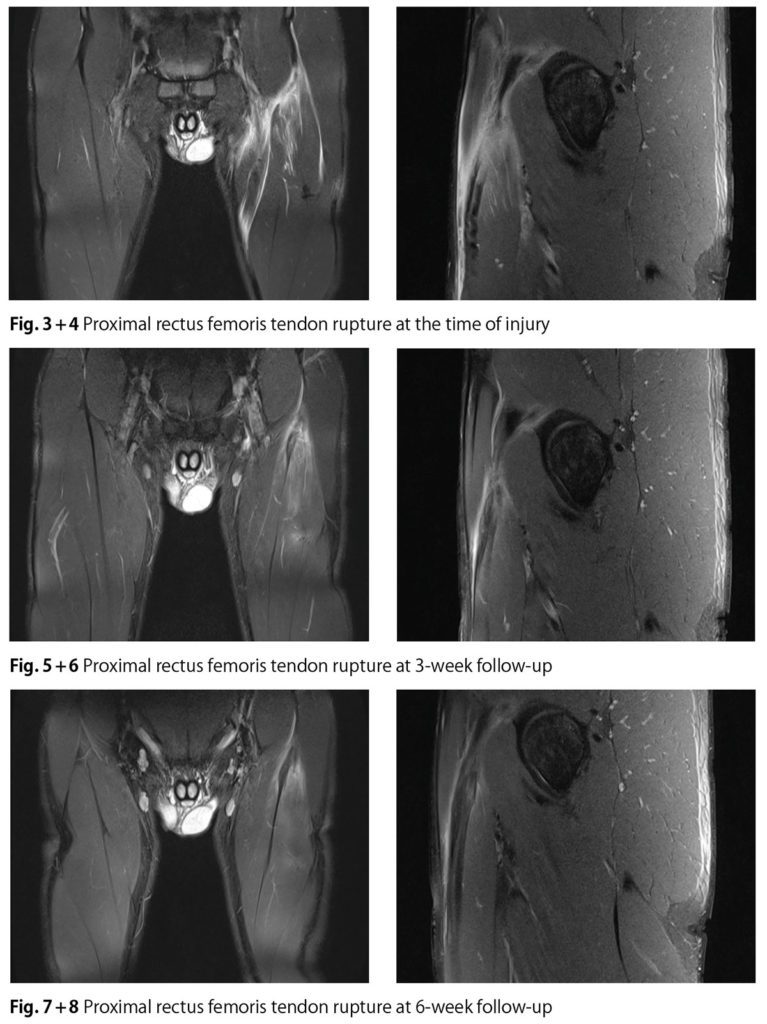
References
[1] Ekstrand et al. Epidemiology of muscle injuries in professional football (soccer) Am J Sports Med. 2011
Autoren
ist Facharzt für Orthopädie und Unfallchirurgie, Sportmedizin, M-Arzt (VBG). Nach Stationen in der Mediapark Klinik Köln und Sportsclinic Cologne gründete er ORTHO SPORTS LAB in Pulheim. Von 2008 – 2011 betreute Dr. Yildirim als Mannschaftsarzt des DFB die U15 – U19-Nationalmannschaften, von 2013-2023 war er Mannschaftsarzt des Fußballbundesligisten Bayer 04 Leverkusen. Außerdem ist er wiss. Beirat der sportärztezeitung.
